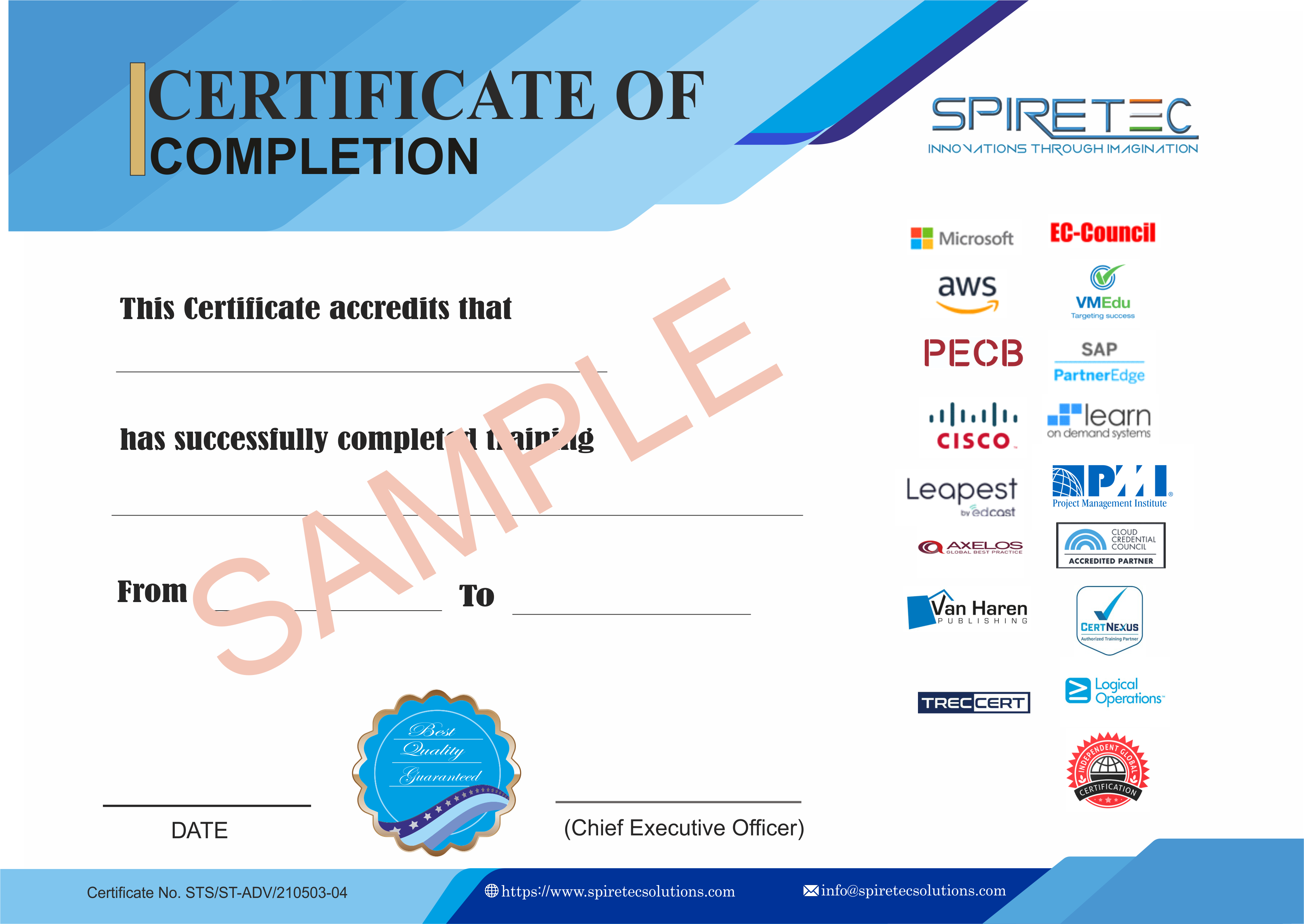The Certified Scrum Developer Course is designed to provide learners with an in-depth understanding of Scrum—the most popular agile development framework. This course covers the fundamental aspects of Scrum, including its principles, aspects, and processes, offering a comprehensive overview that prepares individuals for practical implementation in their work environments. From the course content, it is evident that the training delves into the core and non-core roles of Scrum, organizational aspects like business justification, and essential elements such as quality management and risk assessment in a Scrum context. The course also addresses the need for managing changes and provides a structured approach to initiating, planning, estimating, implementing, reviewing, and releasing in Scrum projects. Learners who undergo Certified Scrum Developer Training will gain valuable skills to contribute effectively as team members in Scrum projects, ensuring quality deliverables and embracing the flexibility that Scrum offers for continuous improvement. Through this course, participants will be equipped with the knowledge to help their teams navigate the dynamics of Scrum and deliver successful projects, benefitting from the framework's advantages in the fast-paced world of software development.
Audience Profile
This is highly recommended for everyone in a company who works in a Scrum Team or anyone who interacts with any Scrum Team. This will also be very useful for those who are interested in understanding the basics of Scrum and how this method could be used effectively.
Prerequisites :
Exam Format :
Course Outline:
Chapter 1: Introduction
-
Scrum Overview: Introduction to Scrum framework, its relevance in Agile methodologies.
-
Scrum Principles: Key guiding principles such as Empirical Process Control, Self-Organization, and Time Boxing.
-
Scrum Aspects: Aspects like Organization, Business Justification, and Change.
-
Scrum Processes: Understanding Scrum’s iterative processes.
-
Scrum Summary: Recap of core concepts and their integration.
-
Scrum Advantages: Benefits of implementing Scrum in projects.
Chapter 2: Organization
Chapter 3: Business Justification
-
Responsibilities of Scrum Roles in Business Justification: Roles in ensuring project value.
-
Factors used to Determine Business Justification: Evaluating the need and ROI.
-
Business Justification Evaluation Techniques: Techniques like NPV, ROI, and Payback Period.
-
Tools for Planning Value: Tools to map and prioritize value delivery.
-
Continuous Value Justification: Ongoing validation of the project’s worth.
-
Summary of Responsibilities: Role-based responsibilities for maintaining business justification.
Chapter 4: Quality
-
Quality Defined: Overview of quality standards in Scrum.
-
Acceptance Criteria and the Prioritized Product Backlog: Ensuring quality via backlog.
-
Quality Management in Scrum: Integration of quality within Scrum processes.
-
Quality Planning: Approaches for quality-focused planning.
-
Continuous Integration and Sustainable Pace: Techniques for maintaining consistent quality.
-
Quality Control and Quality Assurance: Methods of validation and verification.
-
Summary of Responsibilities: Role in maintaining project quality.
Chapter 5: Change
-
Unapproved and Approved Change Requests: Handling change requests.
-
Change in Scrum: Adaptation of change in Scrum.
-
Balancing Flexibility and Stability: Managing changes without affecting team performance.
-
Achieving Flexibility: Strategies for implementing changes efficiently.
-
Changes to a Sprint: Managing changes mid-sprint.
-
Impact of Expected Change on the Length of Sprint: Understanding the effect of change.
-
Managing Changes through Prioritized Product Backlog Grooming: Regular backlog updates.
-
Managing Changes During Demonstrate and Validate Sprint: Review changes during sprint demos.
Chapter 6: Risk
-
What is Risk?: Definition and types of risks in projects.
-
Risks and Issues: Difference between risks and actual problems.
-
Risk Management Procedure: Process for identifying and managing risks.
-
Risk Identification: Techniques for discovering potential risks.
-
Risk Assessment: Evaluation of risk impact and likelihood.
-
Risk Assessment Techniques: Tools and methods for risk evaluation.
-
Risk Mitigation: Strategies to reduce risk.
-
Risk Communication: Ensuring risk-related transparency.
-
Minimizing Risks through Scrum: Scrum’s role in reducing project risks.
-
Summary of Responsibilities: Role of team members in risk management.
Chapter 7: Introduction to Scrum Project Phases
Chapter 8: Initiate Phase
-
Process 1: Create Project Vision
-
Process 2: Identify Scrum Master and Stakeholder(s)
-
Process 3: Form Scrum Team
-
Process 4: Develop Epic(s)
-
Process 5: Create Prioritized Product Backlog
-
Process 6: Conduct Release Planning
Chapter 9: Plan and Estimate Phase
-
Process 1: Create User Stories
-
Process 2: Approve, Estimate, and Commit User Stories
-
Process 3: Create Tasks
-
Process 4: Estimate Tasks
-
Process 5: Create Sprint Backlog
Chapter 10: Implement Phase
-
Process 1: Create Deliverables
-
Process 2: Conduct Daily Standup
-
Process 3: Groom Prioritized Product Backlog
Chapter 11: Review and Retrospect Phase
-
Process 1: Convene Scrum of Scrums
-
Process 2: Demonstrate and Validate Sprint
-
Process 3: Retrospect Sprint
Chapter 12: Release Phase
Chapter 13: Scaling Scrum
-
Scalability of Scrum: Applying Scrum to larger projects and organizations.
-
Transition to Scrum: How to shift from traditional methodologies to Scrum.
-
Resistance to Change: Managing resistance during Scrum adoption.
-
Mapping Traditional Roles to Scrum: Role adaptation from other methodologies.
-
Importance of Executive Support: The role of leadership in Scrum success.







 Live Online Training (Duration : 16 Hours)
Live Online Training (Duration : 16 Hours)
